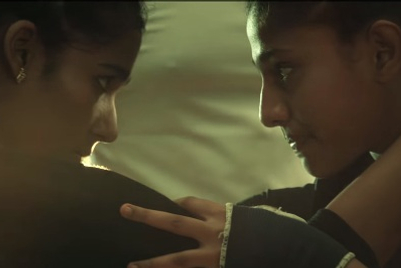On International Women’s Day the advertising industry was falling over itself to celebrate advertising with explicit feminist messages, like
Marketing’s 10 inspiring ads celebrating women. Indeed, no progressive human could deny that it’s great to see femvertising trending.
Sadly though, much lauded campaigns like Sport England's "this girl can", Dove's "real beauty" and Always "like a girl" are only disruptive because they tip the norm. A norm of girls who can't, beauty that isn't real and where being like a girl is a tacit insult. We’re still struggling to bake in more contemporary portrayals of women across the advertising industry.
Aside from the occasional campaigns that explicitly take on the issue, our advertising portrays women in much the same way as the Mad Men era did. Two dimensional-archetypes abound and authenticity is in short supply. Women over 30 solely characterised as nurturers? Tick. Women as decorative objects? Tick. Tall, slim and white as the only expression of female beauty? Tick. And my personal favourite, the perfect multi-tasking life-juggler, smiling symmetrically into her salad? Double tick. In a recent study of TV ads globally, 89 per cent of women were of stereotypical appearance. Two per cent were leaders. And one per cent were funny. Sigh.
The advertising industry is failing to adequately reflect, let alone advance, modern female identity. It lags behind TV programming, which now features strong female leads, authentic beauty and women that make actual jokes as standard. If it works for Netflix’s Orange is the New Black, perhaps it could work for advertising? Hell, even Disney and Mattel have started updating their female characters.
As an industry, we need to change. Failing to identify with an audience that drives 70 to 80 per cent of all consumer purchasing isn’t just a feminist issue, it’s bad for business.
However, changing these portrayals is hard. Yes, even for female creatives. Sometimes we all unwittingly compound these stereotypes. We’ve internalised these norms, so it feels uncomfortable for all of us to break the mould. It just feels kind of normal to place a woman in a submissive pose not eyeing the camera. So what can we do? Celebrating femvertising and hiring more women in creative departments are a lovely start, but this won’t automatically change the advertising we produce.
Perhaps it’s time for advertising to develop its own equivalent of the film industry's Bechdel test, where points are scored when two women talk to each other about something other than a man? In the meantime, here’s my three-point plan to improve our portrayals of women:
1. Approach female beauty as you would male beauty.
Embrace authentic, non-stereotypical beauty, flaws and quirks. A little less plastic, a little more Zoella. Our audience is crying out for it.
2. Consider women for authority roles.
That authoritative voiceover shouldn’t automatically be a man. That boss role shouldn’t automatically be a chap. The protagonist shouldn’t automatically be a guy.
3. Let women be funny.
The fastest short cut to identifying with women is to tap into female humour. If it makes women laugh, it means they’re identifying. This isn’t a call to unleash endless man-bashing gags or one-liners about cellulite or periods, just more stuff women find funny. I hear it’s working for that Amy Schumer.
(Eloise Smith @itsmeeloise is executive creative director of Mullen Lowe Profero. This article first appeared on CampaignLive.co.uk)








.jpeg&h=268&w=401&q=100&v=20250320&c=1)
.png&h=268&w=401&q=100&v=20250320&c=1)
.png&h=268&w=401&q=100&v=20250320&c=1)

